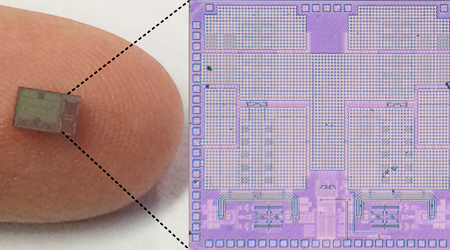“I have been wanting to do this since I was 5 years old,†Cook exclaimed. “The day is finally here.â€
The 54-year-old Cook was harking back to 1965, when any American youngster could tell you that the coolest gizmo around was Dick Tracy’s two-way wrist radio.
The comic strip detective’s creator, Chester Gould, had introduced the futuristic device in 1946, after he scripted Tracy into a jam from which there seemed no credible escape.
Gould decided that he would go high-concept and have Tracy appeal directly to his inky-fingered creator. Gould figured he could then just extricate Tracy from the predicament Manus Dei.
But Gould’s employer, the Chicago Tribune, rejected the idea as a cheat.
Gould then recalled visiting the workshop of an inventor extraordinaire named Al Gross several weeks before. Gross had developed the walkie-talkie when he was barely out of high school. Gross’s more recent projects when Gould stopped by included a two-way radio that could be worn on the wrist like a watch.
Gould now got on the phone to Gross.
“He called and asked if he could use that idea on the wristwatch,†Gross would say in an interview years later. “I told him sure. And he gave Dick Tracy that wristwatch.â€
As a token of his gratitude, Gould presented Gross with the first four panels in which Tracy begins using the soon-to-be-famous gizmo. The device proved to be just the thing for Tracy to extricate himself along with his creator from the predicament.
Do you remember the old dick tracy comics? we're not convinced that Tim cook got the idea from these comics, it's an interesting idea that the whole of apple was built on the idea that one day they would emulate the comic books.
In the comic strip, the two-way wrist radio is created by a young inventor named Brilliant. He develops another seemingly impossible gadget for Tracy conceived by the real-life Gross: a compact, battery-powered video surveillance camera. This is too much for one of the comic-strip mobsters, and Brilliant meets a bloody end in a 1948 installment.
As a token of his gratitude, Gould presented Gross with the first four panels in which Tracy begins using the soon-to-be-famous gizmo. The device proved to be just the thing for Tracy to extricate himself along with his creator from the predicament.
In the comic strip, the two-way wrist radio is created by a young inventor named Brilliant. He develops another seemingly impossible gadget for Tracy conceived by the real-life Gross: a compact, battery-powered video surveillance camera. This is too much for one of the comic-strip mobsters, and Brilliant meets a bloody end in a 1948 installment.
Gross did enjoy a continuing thrill that had been first sparked when he was still in grammar school. His parents took him on a cruise across Lake Erie from Cleveland to Buffalo, and his destiny was decided when he wandered into the ship’s radio room.
“The radio operator put me on his lap and let me put the earphones on,†Gross would remember. “I heard all of those dots and dashes, and I’ve been interested ever since.â€
Wonderment was joined by wondering, and the result powered a lifetime of prophetic tinkering. Gross followed up the walkie-talkie during World War II with a ground-to-air radio system. The U.S. Joint Chiefs of Staff credited it with “saving millions of lives by shortening the war.â€
Yet the closest Gross came to fame was as a pioneering Citizens Band radio operator dubbed “the Father of CB.†Even in this he was best known not by his real name but by his handle, Phineas Thaddeus Veeblefetzer.
Not that Gross needed recognition. He was still busy in his workshop right up to the time of his death in late 2000, at the age of 82.

Childhood fascination was at the heart of it all, so it only makes sense that his two way wrist radio would have had a similar effect on youngsters over the years, these notably including little Timmy Cook in 1965.
On Monday, Cook said he had been wanting for half a century to unveil a real-life gizmo that worked just like the one in the comic strip of his youth.
One hopes Cook is aware that the two-way wrist radio was itself inspired by the real-life ideas of a visionary who should be as well-known to us as Jobs or Gates.
Gross observed in his later years, “‘If you have a cordless telephone or a cellular telephone or a walkie-talkie or beeper, you’ve got one of my patents.â€
And now we can posthumously add the Apple Watch.
Source -Â http://www.thedailybeast.com/articles/2015/03/10/how-dick-tracy-invented-the-apple-watch.html

